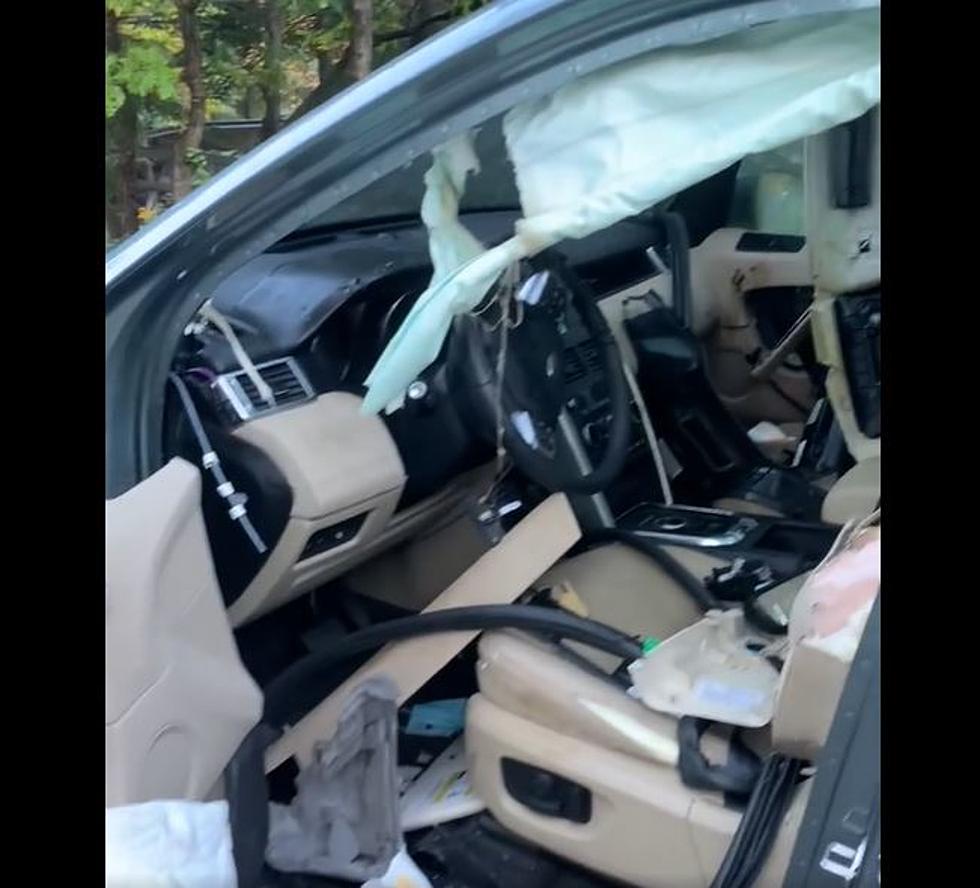
Safety Reminders After a Car has Fallen on a Greeley Teen
My prayers, condolences, and best wishes to family and friends of 18-year-old Avery Chiono, who died when the car he was working on apparently slipped off its jack in Greeley on Saturday.
In the past year, I've had two different scissor jacks, which came with the cars, suddenly collapse. I was very glad that, in both instances, all four tires happened to be on the cars. Had they not, and I'd been underneath, obviously I may not be here.
So far as jacking the car up, your owner's manual will oftentimes have a diagram of exactly where the vehicle's jack should be placed for safe lifting, both for you and for the car itself, usually under the side rail near the wheel you want to lift. If it doesn't, it's time to use some very important judgment, generally finding a solid piece of the car's frame or suspension to lift it by.
In high school autos class, they teach you to never, ever get underneath a vehicle that's jacked up without it being securely supported by something you can absolutely count on. The more typical examples:
Jack Stands
The way my '71 Mustang is built, I have to put it under the control arm, otherwise, the front frame rail, because neither of those will give way! Some vehicles, you can't really get to any of that, though, so like on another car of mine, I put the jack stand next to the jack under the side rail - which is risky enough, but the worst that will happen is it'll dent the bottom of your car in that spot.
Car Ramps
Super convenient to have around, you drive your car up there and like magic, you have all kinds of space to play underneath. However, my cousin will never be the same after his conversion van rolled down a pair and crushed a bunch of his ribs. The only reason he's alive is because somehow, under all that pressure, he could still scream, and his neighbor came and saved his life. My cousin can tell you it's a great idea to take every precaution to make sure the vehicle you're crawling underneath can't roll. Ask yourself what's stopping it from rolling. If you can't quickly answer that, best block the wheels that are on the ground, pull the e-brake and make sure the car isn't in neutral. Naturally, what you're doing to your vehicle that day will decide how effective any of those things will be.
Even using a jack stand, when I service our family vehicle, I try not to even spend time with my legs underneath when I lean in to loosen the oil plug.
Also super important: Whenever possible, only lift your car up on a super flat surface. If you're stranded somewhere, unfortunately, you have to do the best you can.
Finally, only loosen a vehicle's lug nuts when all four wheels are on the ground, then raise it and remove the wheel if needed. At the end of your project, if you're not 100% sure every lug nut is tight on the car once it's back on the ground, it's best to go around it once more to make sure. I can't tell you how many times I've made that mistake, then taken it out for a drive to hear "clunk clunk clunk clunk clunk" because a wheel wasn't tightened down.
I'm a shade tree mechanic at best, so if there's any additional car-lifting advice you'd add to this, have at it.
More From Retro 102.5









